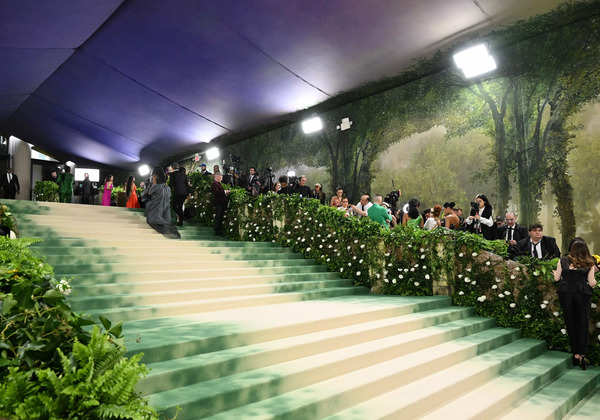In the previous edition, the carpet took on a pristine white hue, intricately adorned with swirling lines reminiscent of the theme “Karl Lagerfeld: A Line of Beauty” and the exhibition’s design itself. Andrew Bolton, the Wendy Yu curator overseeing The Costume Institute, elaborated during the show’s press preview, describing the intricate patterns as symbolic of Lagerfeld’s historicist, romantic, and decorative inclinations intertwined with his modernist, classicist, and minimalist sensibilities. Notably, the era of the red carpet concluded with the 2015 exhibition “China: Through the Looking Glass,” paving the way for a creative evolution characterized by diverse colors, sweeping designs, and symbolic motifs that harmonize with the gala’s ambiance while allowing the spotlight to shine brightly on the myriad of stunning looks gracing its surface.
The history of the Met Gala carpet is a fascinating journey through decades of fashion, art, and creative expression. Initially, the gala’s entrance was marked by a traditional red carpet, symbolising elegance and prestige. However, as the event evolved into a platform for celebrating the intersection of fashion and art, so too did the design of its carpet.

In recent years, the Met Gala carpet has become an integral part of the event’s thematic experience. Each year, the carpet undergoes a transformation to reflect the overarching theme of the exhibition inside the museum. This innovative approach began around 2015, coinciding with the exhibition “China: Through the Looking Glass,” which showcased the influence of Chinese aesthetics on Western fashion.
Since then, the carpet has served as a canvas for artistic expression, mirroring the themes explored within the museum’s walls. In recent years, the Met Gala carpet has evolved beyond traditional red hues, incorporating a diverse range of colours, textures, and motifs. From off-white carpets adorned with airbrushed foliage to elaborate designs inspired by pre-Raphaelite art, each iteration of the Met Gala carpet serves as a proof of the event’s commitment to creativity and innovation in the world of fashion and art.
